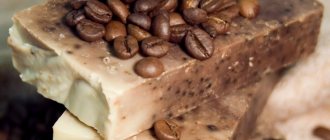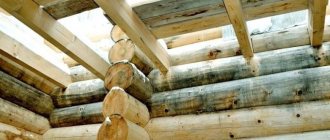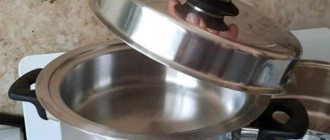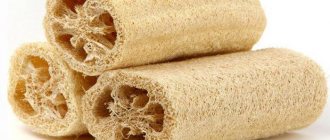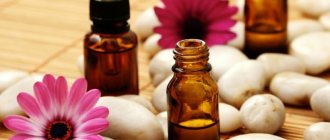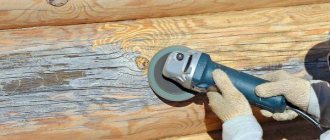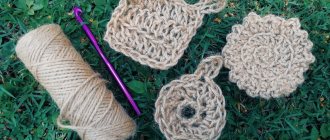Luffa is an annual plant of the Cucurbitaceae family. This unusual vine with long fruits came to us from the subtropics of Asia and has long been loved by many gardeners. Young luffa fruits can be eaten like cucumbers, and the ripe ones make wonderful natural washcloths.
The Luffa genus includes more than 50 species, among which the most popular are the sharp-ribbed and cylindrical luffa. Luffa fruits are shaped like cucumbers, their length can be 30-50 cm, and sometimes more.
Ribbed luffa
Dietary luffa fruits, when unripe, have delicate, sweetish pulp and are used in cooking for preparing salads, soups and side dishes. Greens are rich in carotene, potassium, calcium, magnesium, phosphorus, iron and contain B vitamins. As the fruits ripen, the pulp becomes fibrous and, after processing, is suitable for making washcloths, rugs, mattresses and even hats.
How to make a washcloth
First of all, you need to purchase luffa fruits in a specialized store or collect them from the garden. The hardness of the sponge directly depends on the degree of their maturity. Unripe fruits provide a soft structure to the product. If they are not picked off in a timely manner and a small “tail” is allowed to form at the end, a washcloth made from such raw materials will turn out to be very hard and can irritate the skin. Luffa fruits are usually collected slightly unripe in late September-early October.
Before making a washcloth, the raw materials are dried for two weeks in a well-ventilated place. A characteristic sign that the material is “ready” for work is the rustling of the seeds inside the fruit when turned over.
Sequence of work to create a washcloth:
- soak the fruit in water for 2.5 hours;
- trim the ends, peel the sides;
- scrape out the remaining seeds and fibers using a knife or a stiff brush;
- rinse the fruit twice in a warm soap solution;
- dry in a well-ventilated area;
- form pieces of convenient size;
- tie the ropes.
The luffa washcloth does not cause irritation, it is hypoallergenic, so it can be used by people with sensitive skin. It cleanses pores well and stimulates blood circulation, which is why it is used in medical practice for anti-cellulite and lymphatic drainage massage.
A very hard washcloth can be softened with boiling water and vinegar. Before use, place it in acidified hot water for 7 minutes, then rinse. For 500 ml of boiling water you will need 5 ml of vinegar. To use a face washcloth, perform a similar procedure twice. For rough foot skin, there is no need to soften it.
Tips for use
The main condition when using a luffa washcloth is not to harm the body. It is not recommended to intensively massage the skin with it. Due to its rigid structure, it easily removes the upper layer of the dermis and, with excessive pressure, can scratch it and lead to the formation of wounds on the body. To soften the effect of the luffa, apply body oil/cream or shower gel to its surface.
It is not recommended to simultaneously use hard washcloths with aggressive citrus essential extracts or cosmetics enriched with large amounts of vitamin C.
A natural luffa sponge should not be used more than 2 times a week. To stimulate blood circulation, each part of the body is “worked” from bottom to top in circular movements for 30 seconds. After peeling with a washcloth, the skin is lubricated with cosmetic milk/oil or moisturizer.
To avoid the development of pathogenic microorganisms on the surface and inside the sponge, each time after use, wash it thoroughly with soap under running water, dry it on a radiator or in another warm, dry place.
Related questions:
How long does it take to grow a loofah?
If you are growing loofah to harvest sponges, they will take 150-200 days to reach maturity. If you want to grow loofahs to eat - like you would do zucchini - loofahs will generally be ready for harvest 2-3 weeks earlier, within 130-170 days.
Can loofah be grown in containers?
Yes, you can grow loofah in containers. Use a 12-inch container or larger as the roots will grow quite deep. Place the container in a location that gets full sun (and grow light to supplement it for indoor growing), and be sure to provide supports for the climbing vines. This is a great option if you live in a shorter growing season and need to keep them inside longer, or if you have poor soil and drainage quality in your garden.
What can I do with a loofah washcloth?
There are all kinds of products and gifts that you can easily make using sponges. Soap dishes and multi-purpose scrubbers (dishware, body, bath, etc.) are the most common uses , but I've even seen artwork and flower vases made from loofahs!
Advantages over synthetic washcloths
Luffa products are used in cosmetology for anti-cellulite and cleansing procedures. With regular use (2 times a week for 3 months), they allow you to break down fatty deposits in the subcutaneous tissue, thereby reducing their severity in problem areas of the body: buttocks, thighs and abdomen.
Advantages of a loofah sponge:
- high degree of rigidity, which makes it possible to use it for peeling and anti-cellulite massage;
- long service life (does not crumble, does not crumble);
- hypoallergenic (does not cause skin reactions);
- improves blood circulation, which promotes the production of collagen and elastin;
- reduces the appearance of “orange peel”;
- cleanses the dermis of dead epithelial cells;
- stimulates the penetration of oxygen into cells, thereby increasing skin tone.
Based on hygiene principles, it is recommended to change the washcloth once every six months.
Plant varieties
There are more than 50 types of luffa in nature, among which only 2 cultures have gained the most popularity: cylindrical luffa and sharp-ribbed luffa. Other varieties are impractical to grow due to their small fruits.
Luffa sharp-ribbed or faceted
Native to India and Pakistan. It is an annual vine, 5 m long, with pentagonal stems and large lobed or charcoal leaves. Luffa is attached to a support using branched tendrils. The flowers are dioecious, small, pale yellow, collected in inflorescences of 20 pieces. The fruits are club-shaped with protruding longitudinal ribs, up to 10 cm in diameter, up to 30 cm in length. The taste of the pulp is reminiscent of a cucumber, juicy and slightly sweet. As it ripens, it dries and acquires a fibrous structure. When the fruit is ripe, a so-called hard “sponge” of intertwined bundles is formed inside. The seeds are wrinkled, yellowish-black, numerous, and have a flattened-ovate configuration.
Luffa cylindrical or Egyptian
Distributed in countries with subtropical and tropical climates. This is an annual liana with palmate-five-lobed leaves, bright yellow flowers, collected in inflorescences of 15 pieces. The fruits are cylindrical, smooth, without ribs, reaching 10 cm in diameter and 50 cm in length (sometimes more). The seeds are oblate-ovate with a border up to 1 mm wide.
Young fruits (up to 15 cm in length) of granite and Egyptian luffa are eaten. They are eaten raw or cooked (boiled, stewed, preserved). Ripe seeds are roasted and consumed like sunflower seeds. In addition, they are used in the cosmetics industry to produce lipsticks.
The shoots, buds, flowers, and young leaves of the plant are suitable for food. A sponge made from dried fruits is used for technical purposes as a filler for mattresses, an insulating material, a filter, and a material for making washcloths, hats and rugs.
Types of luffa
The culture is represented by a wide variety of varieties and varieties.
However, only two types of this interesting plant are of interest to gardeners: cylindrical luffa (luffa cylindrica) with black seeds and sharp-ribbed luffa with white seeds (luffa acutangula).
The remaining several dozen species produce such small fruits that growing them is pointless.
The cylindrical loofah gourd is cultivated to produce natural loofah. Cylindrical pumpkins are similar to zucchini. Ripe fruits consist entirely of hard fibers.
The fruits of the ribbed luffa are mainly consumed as food. Small unripe pumpkins are used to prepare a variety of dishes.
Growing and care
Luffa cultivation is a profitable business. From 20 plant bushes you can prepare up to 800 natural sponges of various sizes. With proper placement and good care, you can get a high yield.
For planting, it is recommended to purchase the “Luffa cylindrical” variety, which is well suited for the production of washcloths. The cultivation technology is similar to the method of cultivating cucumbers. The plant is moisture-loving, does not tolerate transplantation, and does not bear fruit well when planted in dense areas.
Growing luffa:
- Sow the seeds in March-April in separate peat cups. Before emergence, the ambient temperature should be at least 25 degrees. Keep the soil moist. When seedlings appear, the cups are moved to a cool place for 40 days, where the temperature is maintained at 15-18 degrees.
- The seedlings begin to harden when conditions for growth become favorable (the nights become warm) and they are planted on the south side in open ground.
The plant is sensitive to soil. The productivity of the species depends on the nutritional content of the soil. Luffa loves loose, light soil. Therefore, the area for the crop is prepared in advance. In autumn, ash and humus are added to it.
- Make a hole, add manure, mix with soil, transplant the seedlings with a lump of soil where the roots of the plant are concentrated.
- The distance between vines should be at least 1.5 m. The plant grows quickly, thickening the planting. As a result, if the distance is not maintained, the luffa will not produce a good harvest.
Remember, the root system of a vine is superficial, so it is better to install support for the plant right away, and as it grows, guide the shoots along an arch, gazebo, or stretch nets.
- When the luffa reaches 5 m in height, the middle branch is pinched. This will increase the yield of the plant.
- Fertilizing is applied once every 2-4 weeks, based on the calculation of 0.5 liters of ash and 1 liter of mullein per bucket of water. Make sure that the soil does not dry out, but waterlogging should also not be allowed.
Interestingly, as luffa fruits ripen, they dry out and decrease in weight. The crops must be harvested before the ambient temperature drops below 10 degrees at night, even if they are still green. The ripeness of luffa is indicated by the yellowed shell of the plant.
Common problems
If your loofah plants are showing signs of stress and disease, you are not alone. They are susceptible to the same types of pests and diseases as other pumpkins and cucumbers, mainly:
- Bugs (not one to have an incredible back catalog of iconic songs that have been around for over 50 years)
- over Dehydration
- under watering
- Inconsistent watering (guilty as accused).
Beetles
Cucumber beetles and squash beetles, for example, will really like (and by “how” I mean “destroy”) your loofah plants. You can control beetles by regularly applying your preferred plant insecticide solution. I make my own natural and organic solutions at home, and I also use diatomaceous earth regularly throughout the garden.
Watering
The main problems I encounter with loofahs are almost always related to the amount of water they get (or don't get).
For Dehydration
If you don't have good drainage in your garden and you overwater the plant, it will essentially choke it and cause the roots to rot.
If the edges of the leaves turn brown or the plant suddenly becomes infested with pests, the problem may be overwatering.
Look for water pooling under the plant or excessive moisture.
If drainage is your problem, try amending the soil as best you can with a mixture of sand, mulch and compost. It can also help thin out the plant by removing some of the branches that block sunlight from reaching the soil, creating a dark, damp, disease-prone environment underneath.
Under watering
Most often my problem is that I don't water the loofah enough. Fallen leaves, rotting branches and fruit, and stunted or slow growth are all signs of underwatering.
The soil around the plants should not be dry or crumbly. If this happens to you, give your loofah plants some water and attention for a few days and see what happens—they'll probably start coming back to life within a week.
If you feel like you're watering constantly but your plants are still dry and stressed, try adding a layer of mulch around the base of the plants. The mulch will keep the sun from drying it out too quickly, which will of course keep your plants watered for longer.
No gardener is perfect, and growing a loofah can be challenging, but with a little persistence you'll be the coolest gardener on the block.
It will be worth it when you surprise your friends at dinner parties with your cute little pumpkins and give homegrown gifts at Christmas.
Use in folk medicine
Egyptian luffa fruits and seeds have shown antimicrobial potential and antioxidant effects. The juice of the plant is indicated for use internally to combat jaundice, as well as externally for treating animal bites and disinfecting ulcers.
The seeds are classified as laxatives and emetics, and the fruits are classified as sedatives, diuretics, and dietary products.
In India, Iraq, and Iran, the roots of the plant are used for dropsy. In Bangladesh, a decoction of the leaves is prescribed for people suffering from uremia, amenorrhea, hemorrhoids and leprosy. Seed oil improves the condition of the skin and is used for dermatitis. In West Africa, the juice of the leaves is used to wash the eyes for conjunctivitis. In Mauritius, the seeds are eaten to suppress the growth of worms.
To maintain beauty
Luffa is used not only in cooking, folk medicine and farming, it is an indispensable product in cosmetology, on the basis of which moisturizing masks, toning lotions and cleansing compositions for the care of normal and oily skin are prepared. Before performing the procedure, thoroughly wash away dust, dirt, and remaining fat accumulated during the day from the surface of the dermis.
Best materials of the month
- Coronaviruses: SARS-CoV-2 (COVID-19)
- Antibiotics for the prevention and treatment of COVID-19: how effective are they?
- The most common "office" diseases
- Does vodka kill coronavirus?
- How to stay alive on our roads?
To prepare a moisturizing mask for the face, hands, and décolleté, luffa leaves (2 pieces) are crushed, honey (5 ml) and olive oil (2 drops) are added to the green puree. The resulting mass is applied to the skin for 10 minutes, then washed off and nourished with cream.
To create a lotion that restores the pH of the skin and whitens the face, the juice is squeezed from the leaves and stems of the vegetable, which should be used to wipe the dermis daily.
Preparing a site for a loofah, fertilizing the soil
Choose a place protected from wind and drafts, but with sufficient light. Loofah prefers well-fertilized sandy loam. Before planting 1 sq. m contribute:
- organic matter (manure 5–6 kg);
- superphosphate (50 g);
- potassium sulfate (20 g);
- ammonium nitrate (40 g).
The holes for planting are formed 30x30 cm, about 20 cm deep. The seedlings are filled up to the cotyledon leaves. Leave 0.8–1 m between plants, since the loofah will require a lot of space.
It is necessary to take care of the trellises in advance so as not to harm the roots later. From the third pair of true leaves, the plant stem needs support; if the vine is not supported, then healthy fruits of the correct shape should not be expected. From contact with the ground, the loofah is often affected by fungus and rot. You should not use garden trees as supports; ovaries and young fruits can easily be injured among the branches.
Any soil is suitable for growing loofahs.
During the season, the vine requires several additional feedings with ammonium nitrate and a nutritious ash solution. Before flowering begins, nitrogen-containing mineral complexes are added under the loofah.
Conclusion
Luffa is a technical plant of the pumpkin family. The homeland of the vegetable crop is Oceania, India and Africa. Luffa fruits are used for technical purposes (for the production of soap and washcloths, mechanical water purification), and the food industry. The buds, flowers, leaves and shoots of the plant are consumed fresh or fried. Moisturizing face masks and tonics are prepared on their basis.
The fruits are consumed exclusively when unripe, while they have soft, juicy, watery pulp. Like any product, the vegetable is stored in the refrigerator on the bottom shelf for a maximum of 3 days. As it ripens, it changes the color of the shell (from green to yellow), dries out, and acquires characteristic hardness. This feature of exotic fruits is used to produce natural washcloths. They have an unlimited shelf life and are hypoallergenic. A luffa sponge improves blood circulation, evens out skin color, exfoliates dead cells, and reduces the appearance of stretch marks and cellulite.
More fresh and relevant information about health on our Telegram channel. Subscribe: https://t.me/foodandhealthru
We will be grateful if you use the buttons:
Peculiarities
Domestic gardeners note several positive aspects in growing tropical luffa:
- The decorative effect of the plant itself, as well as the unusual appearance of the giant “zucchini” hanging from the stems.
- The ability to use young fruits for food, and the juice of the stems for homemade cosmetics.
- Ease of cultivation, comparable to growing cucumbers.
- Obtaining natural washcloths for your own use or sale.
Loofahs are made from luffa.
Craftsmen use the hard, elastic luffa fiber to make decorative jewelry, furniture, lamps, hats, and shoes. Official furniture manufacturers use natural material to fill mattresses.
Apart from the need to install high, strong supports, the culture has no disadvantages. Even its heat-loving nature does not become an obstacle for domestic enthusiasts. Loofah is a tropical plant, unusual for middle latitudes, which nevertheless lends itself well to cultivation and can decorate a garden, vegetable garden or flower bed.
The culture does not require complex cultivation techniques. Any gardener familiar with the characteristics of pumpkin crops can cope with its propagation and care of the bushes.

